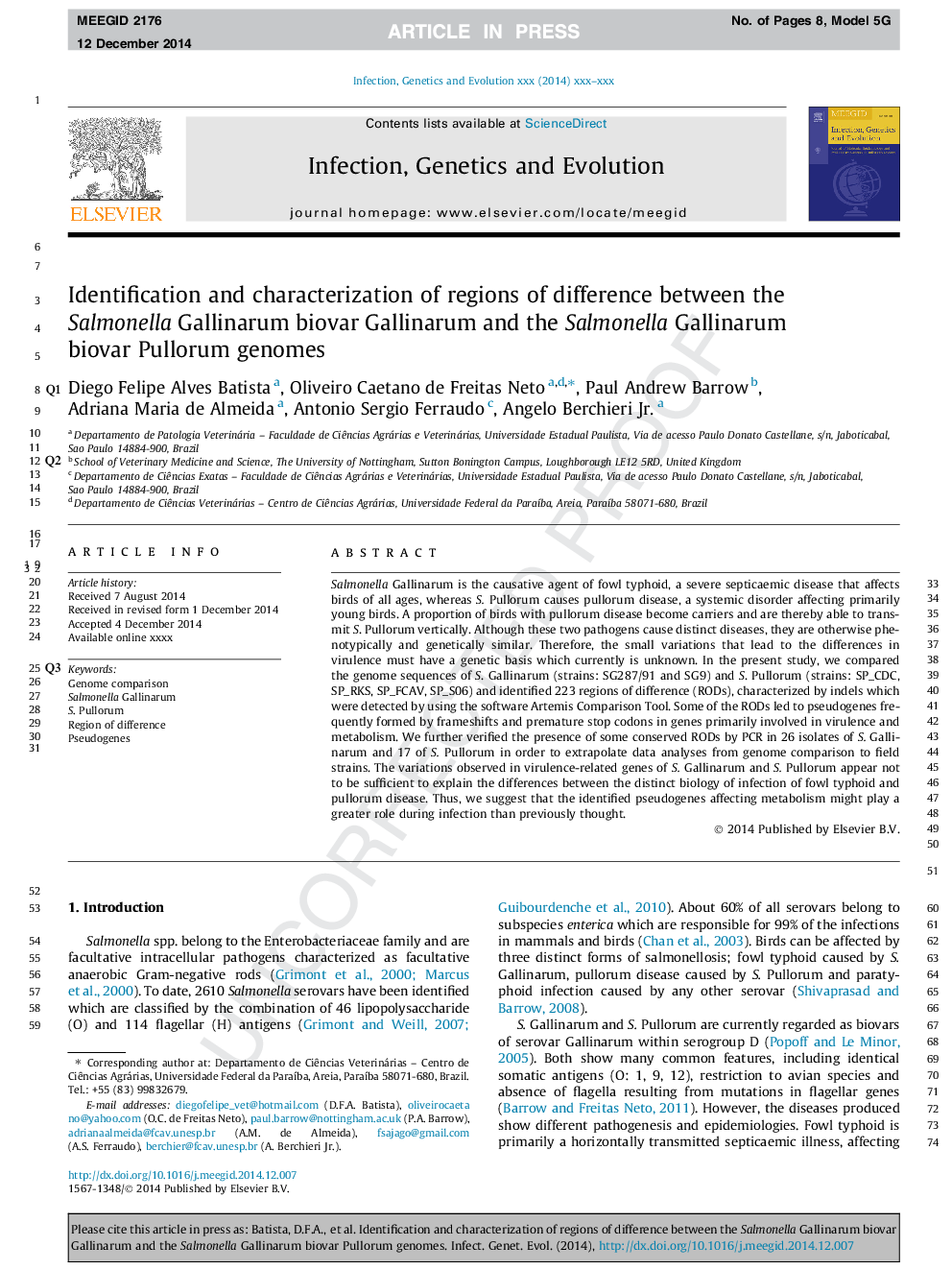| Article ID | Journal | Published Year | Pages | File Type |
|---|---|---|---|---|
| 5908737 | Infection, Genetics and Evolution | 2015 | 8 Pages |
Abstract
Salmonella Gallinarum is the causative agent of fowl typhoid, a severe septicaemic disease that affects birds of all ages, whereas S. Pullorum causes pullorum disease, a systemic disorder affecting primarily young birds. A proportion of birds with pullorum disease become carriers and are thereby able to transmit S. Pullorum vertically. Although these two pathogens cause distinct diseases, they are otherwise phenotypically and genetically similar. Therefore, the small variations that lead to the differences in virulence must have a genetic basis which currently is unknown. In the present study, we compared the genome sequences of S. Gallinarum (strains: SG287/91 and SG9) and S. Pullorum (strains: SP_CDC, SP_RKS, SP_FCAV, SP_S06) and identified 223 regions of difference (RODs), characterized by indels which were detected by using the software Artemis Comparison Tool. Some of the RODs led to pseudogenes frequently formed by frameshifts and premature stop codons in genes primarily involved in virulence and metabolism. We further verified the presence of some conserved RODs by PCR in 26 isolates of S. Gallinarum and 17 of S. Pullorum in order to extrapolate data analyses from genome comparison to field strains. The variations observed in virulence-related genes of S. Gallinarum and S. Pullorum appear not to be sufficient to explain the differences between the distinct biology of infection of fowl typhoid and pullorum disease. Thus, we suggest that the identified pseudogenes affecting metabolism might play a greater role during infection than previously thought.
Related Topics
Life Sciences
Agricultural and Biological Sciences
Ecology, Evolution, Behavior and Systematics
Authors
Diego Felipe Alves Batista, Oliveiro Caetano Freitas Neto, Paul Andrew Barrow, Marcos Túlio de Oliveira, Adriana Maria Almeida, Antonio Sergio Ferraudo, Angelo Berchieri Jr.,
